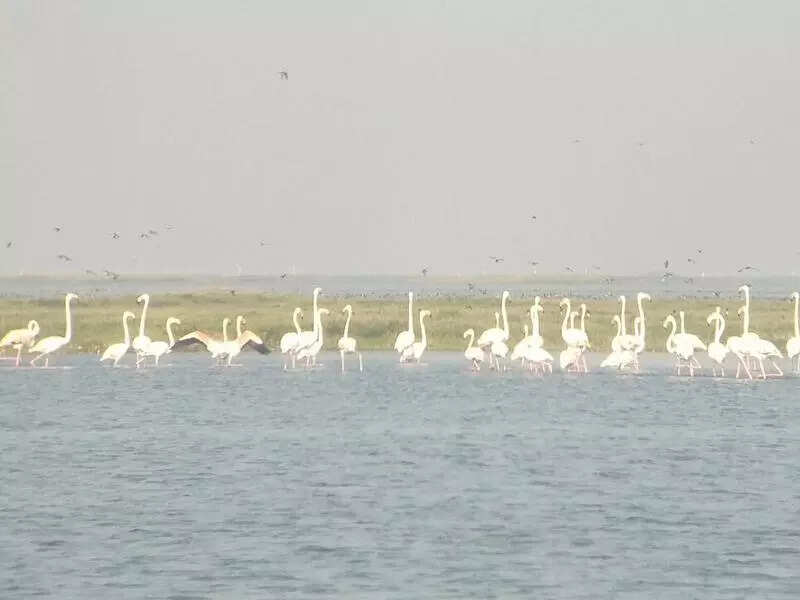State’s wetlands welcome over 16L migratory birds

Bhubaneswar/Kendrapada: More than 16 lakh migratory birds of over 200 species were sighted across the state’s wetlands, up from 15 lakh last year.
Hirakud wetland, a Ramsar Convention site, recorded the highest jump of 35,387 birds. Last year, 3,42,345 birds were sighted. This year the number went up to 3,77,732.
But in Chilika, the state’s largest wetland, the number of avian visitors fell by over 10,000, while there was a minor increase of 193 birds in Bhitarkanika.
The bird census was conducted across the state’s 52 divisions in which more than 200 dedicated participants, including forest personnel, ornithologists, researchers, and trained volunteers surveyed the wetlands using spotting scopes, binoculars and data sheets.
At Bhitarkanika National Park, as many as 1,51,614 migratory birds belonging to 118 species arrived at the country’s second-largest mangrove forest, compared to last year’s 1,51,421 birds of 121 species.
“We sighted around 44,825 Lesser Whistling Ducks and 18,776 Northern Pintail during the census. Other important birds we counted were grebes, pelicans, jacanas, gulls, terns, skimmer, grey-headed lapwing, sandpiper, painted snipe and other avian species,” Sudrashan Gopinath Yadav, the divisional forest officer of the park, said.
He added, “The winged visitors started arriving in Nov as the park presents them with a comparatively more hospitable habitat compared to the extreme freezing conditions in their natural habitats in Siberia, China, Japan and other countries. The birds often frequent open wetlands which have enough fish, prawns, frogs, snakes and molluscs. The area provides an extensive feeding ground for the birds because of the availability of abundant fish in the lake and the distance of its location from human habitats.”
“The park has come alive with myriad of colours with the arrival of several migratory winged visitors from as far as Central Asia and Europe. Now tourists are engaging in birdwatching in the water bodies of the lake,” Yadav said.
Hirakud wetland, a Ramsar Convention site, recorded the highest jump of 35,387 birds. Last year, 3,42,345 birds were sighted. This year the number went up to 3,77,732.
But in Chilika, the state’s largest wetland, the number of avian visitors fell by over 10,000, while there was a minor increase of 193 birds in Bhitarkanika.
The bird census was conducted across the state’s 52 divisions in which more than 200 dedicated participants, including forest personnel, ornithologists, researchers, and trained volunteers surveyed the wetlands using spotting scopes, binoculars and data sheets.
At Bhitarkanika National Park, as many as 1,51,614 migratory birds belonging to 118 species arrived at the country’s second-largest mangrove forest, compared to last year’s 1,51,421 birds of 121 species.
“We sighted around 44,825 Lesser Whistling Ducks and 18,776 Northern Pintail during the census. Other important birds we counted were grebes, pelicans, jacanas, gulls, terns, skimmer, grey-headed lapwing, sandpiper, painted snipe and other avian species,” Sudrashan Gopinath Yadav, the divisional forest officer of the park, said.
He added, “The winged visitors started arriving in Nov as the park presents them with a comparatively more hospitable habitat compared to the extreme freezing conditions in their natural habitats in Siberia, China, Japan and other countries. The birds often frequent open wetlands which have enough fish, prawns, frogs, snakes and molluscs. The area provides an extensive feeding ground for the birds because of the availability of abundant fish in the lake and the distance of its location from human habitats.”
“The park has come alive with myriad of colours with the arrival of several migratory winged visitors from as far as Central Asia and Europe. Now tourists are engaging in birdwatching in the water bodies of the lake,” Yadav said.
















